Micro-GPR results from Laetoli
This is the famous paleoanthropology site of Laetoli in Tanzania where I worked with colleagues in July 2023.
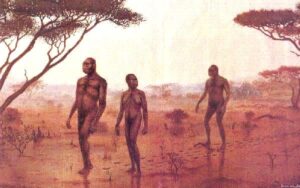
It is known for the fossilized trackways of hominids who walked across a surface of wet volcanic ash and left their prints, which were then covered by a hot lapilli tuff within a few hours of being formed. This preserved the 3.6 millon year old prints. They were discovered by a Mary Leakey team in 1979 and uncovered and studied in the years that followed. This is what they looked like in the early 1980s.

These prints were then covered over with large basalt boulders under the direction of the Getty Museum conservation group from California. Here is what this site (Site G) looks like today:
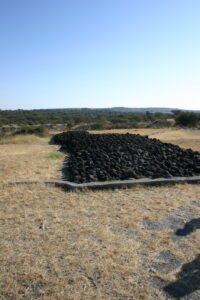
A new research group led by Charles Musiba (University of Colorado, Denver), which I am a part of, has returned here to study this important site. My task was to see if ground-penetrating radar can image these prints, which are buried at Site S by between 15 and 70 cm of overlying soil.
The surface on which they are preserved is called Tuff #7 (T-7), which is exposed nearby.
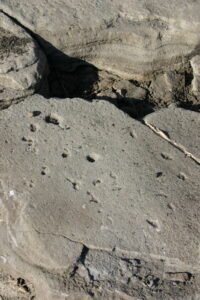
It is an amazing “time capsule” of animal and plant life in east Africa from 3.6 million years ago. I was amazed to see the variety of animal life that left prints on T-7.
Here are a few of the pictures of this surface nearby. Rhinos, elephants, many smaller grazing animals and many birds and small mammals left their tracks here.
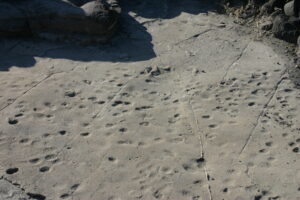
All this activity, including prints of our ancient human ancestors may have occurred during a very short time (a few days or perhaps hours?) when the wet ash dried in the sun, preserving the prints, and then was quickly covered by the next layer (T-8) and preserved. The surface was dried into a “crust”. I could see almost no evidence of any other prints that broke through this crust but many prints were superimposed on others as there was a good deal of activity going on in a very short period of time. The preservation episode (the Tuff #8 eruption) must have occurred very shortly after this crust dried. All the animals and hominids were likely upset by this eruption (small hot pieces of volcanic material like a really hot hail storm!) falling on them. I would have been. I wonder where they went? There is no evidence that they died, but they must have been bothered a good deal by this preservation event.
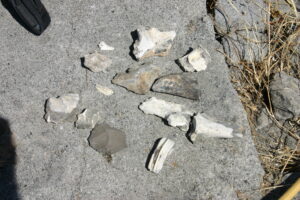
The area also contains a wealth of bones of non-hominins, including teeth and other hard bones of a variety of animals. Also some very primitive stone tools, one of which is in this picture above. One possible Australopithecus jaw fragment has been found nearby.
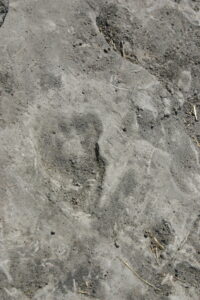
The first print discovered by the Leakey group in the late 1970s is at Site A (above). It is still out in the open, being progressively weathered and eroded as the years go by (this saddens me). Seven others were found within a few meters of this print in late July, 2023, so this area is going to see a good deal of research in coming years. Hopefully it will be covered up by a roof soon. I have a GPR grid that I have not processed, which may show this new trackway, but have not yet started working on it as of Oct 10, 2023.
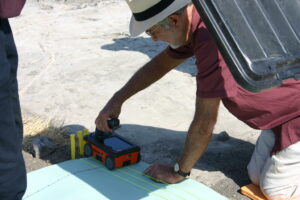
I brought a GSSI 3.7 GHz concrete scanning radar system to Laetoli in July, 2023. It looks like a little toy, but is very powerful, producing extremely short wavelength radar waves that are capable of resolving vertical variations in strata on the order of 1-2 cm at depths of about 40-50 cm.
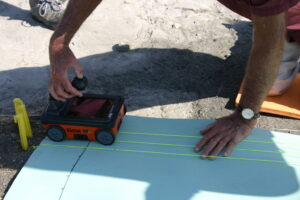
Reflection profiles were collected on a yoga-mat after the ground surface was cleared of grass and stones. Profiles were collected every 5 cm in a time-window of 6 nanoseconds. I quickly determined that the useful reflections were in the upper 3 ns. It was apparent that I needed to frequency filter these data to obtain the reflections recorded from the depth in the time-window I cared about. This I did after returning to Denver. All my work was done at Site S, which is near the Site G, which has the extensive trackway shown above.
This is the GPR grid I am working on at Site S. It is between two excavations made by Masao et al. (2016), which are now also covered by basalt stones. Lots of reflections to work with here, in a grid that is only 12.3 meters long and 1.5 meters wide (247 individual profiles).
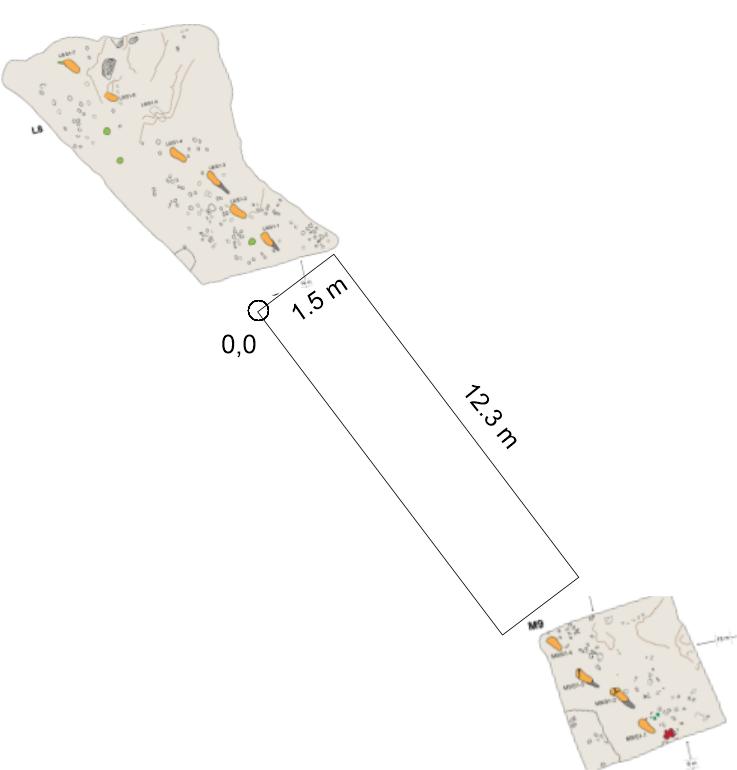
The GPR grid is between two excavations where one trackway is well preserved on the T-7 surface. One additional print was also uncovered by this team in 2015 suggesting there may be many more prints to find here.
I created a model of what prints would look like in a perfect condition in 2020, and then studied their resolution using a variety of antenna frequencies, and studied the amplitude of waves and the depth of the layer they were produced on. Below is one of my examples from this modeling, indicating that the 3.7 GHz antenna would be good for print resolution at the depth necessary. Depressions are visible in the buried surface, with interesting changes in amplitude due to focusing and dispersion of radar waves in the depressions:
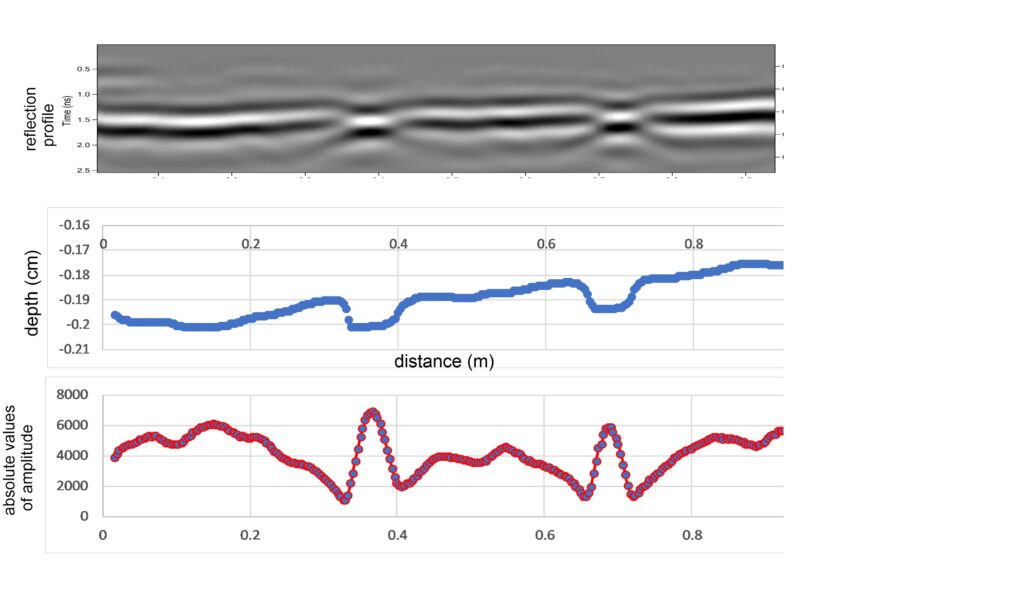
Of course the real world is always very different than models. Below are the raw data from Laetoli on the top, and my frequency filtered profile below where I produced a new set of reflection data using only certain frequencies. Here I focused on the reflections in the upper 2 nanoseconds, retaining only 2.5-3.7 GHz waves. This removed some of the deeper reflections (which I can reconstitute later when I need to map this surface more deeply buried):
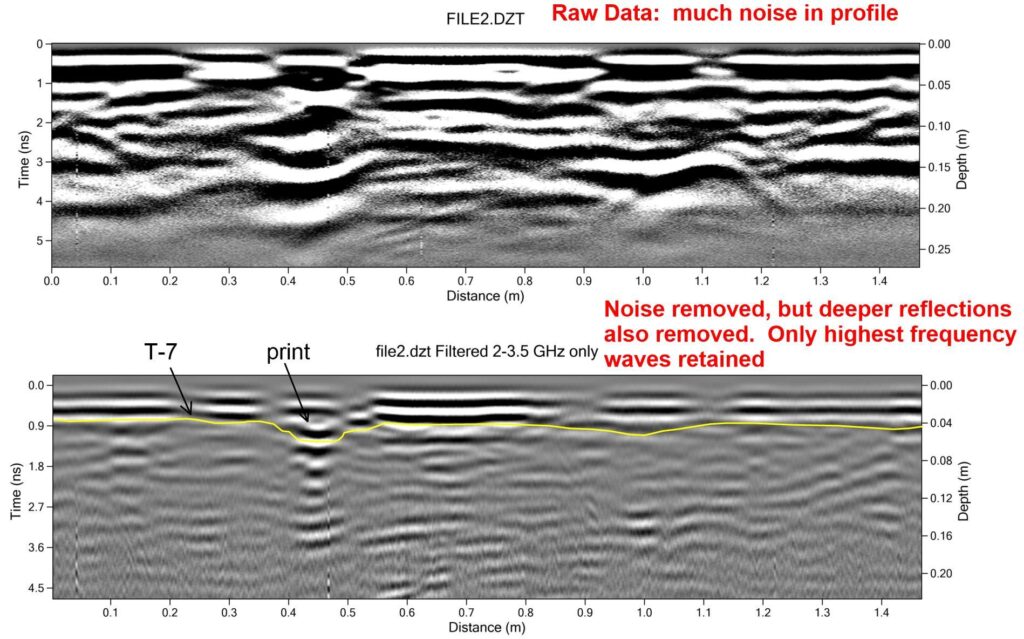
When the prints were mapped individually after frequency filtering the ground was quite similar to the models that were produced:
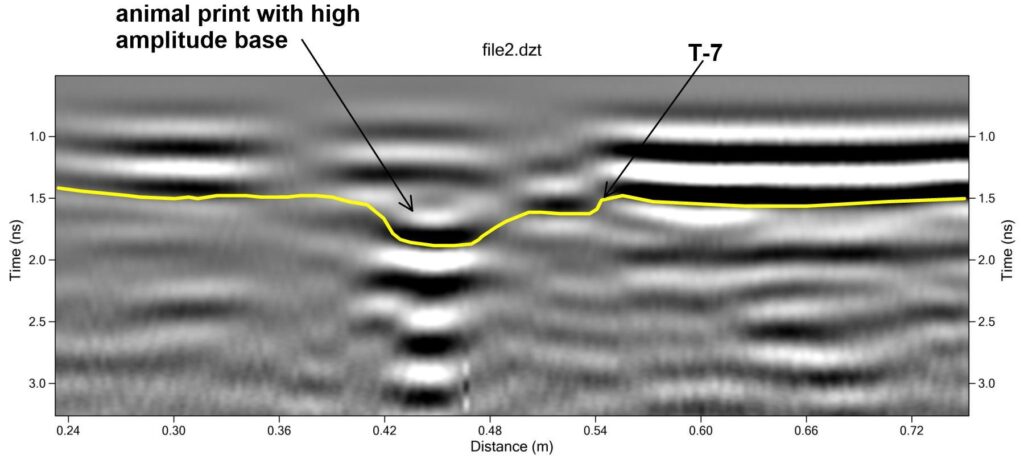
Here are some preliminary results of GPR three-dimensional analysis at Site S. I have found 11 prints that show up nicely, numbered 1-12. Print 8 is not visible as the T-7 surface is highly disturbed by cracks and tree roots in one area.
I first digitized the top of the T-7 surface and made a contour map of it. Below is Print #2 that shows a “heel drag” at the top.
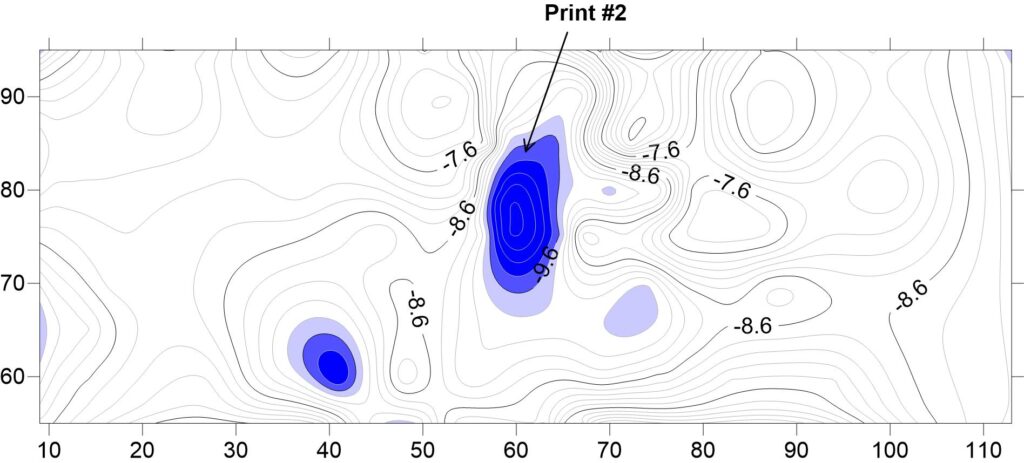
.
Then I made a three-dimensional image of the top of the T-7 to show what this one print looks like: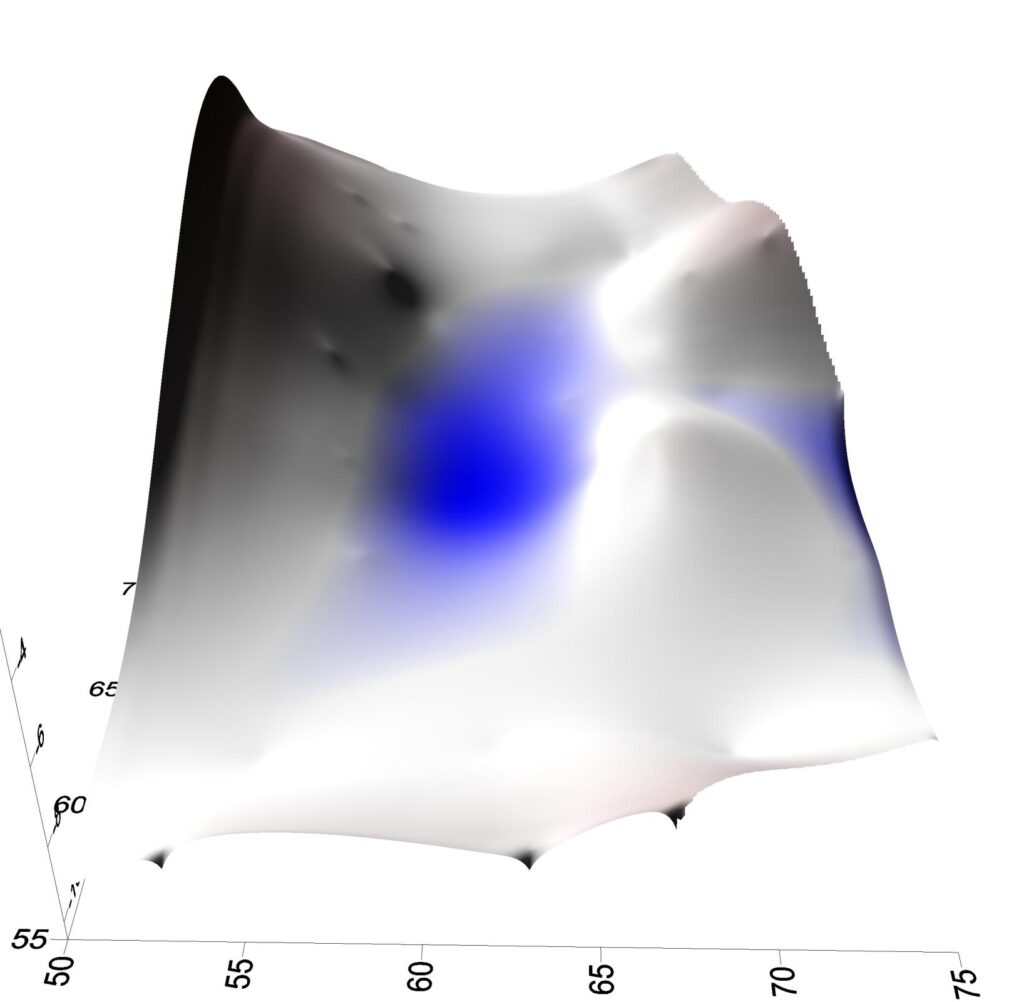
This was done for all the prints. Some were more complicated, such as this one below that is surrounded by other features such as fractures and perhaps animal prints. This produces a complex picture of the tuff surface. The prints are known to be between 53 and 60 cm apart (the stride of the individual), so it was easy to determine which were hominid prints and which are other features, once the trackway had been partially mapped. I like this one below as it shows individual depressions of the ball of the foot and the heel. The other features in this map are depressions associated with a fracture that crosses the grid:
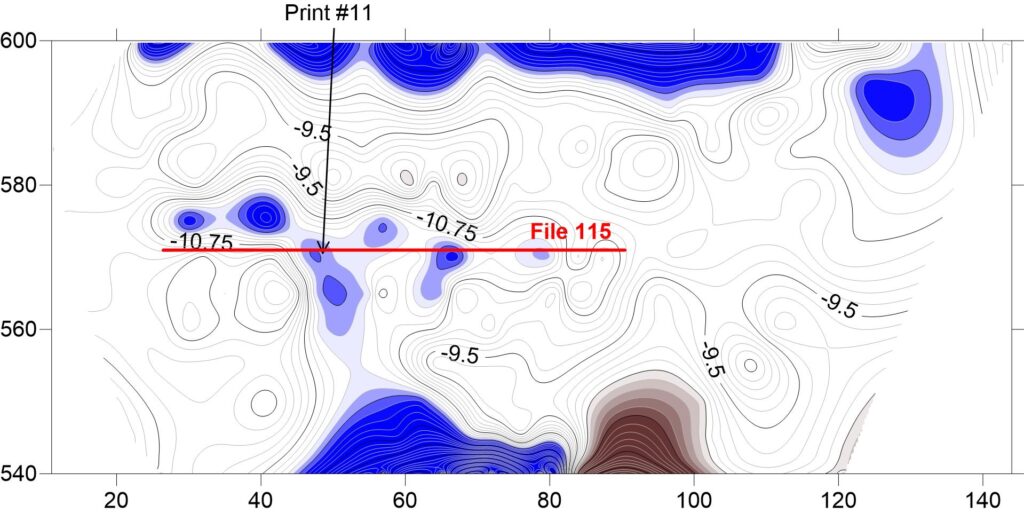
The complexity ot the T-7 surface can be seen in this three-dimensional image of Print #11:
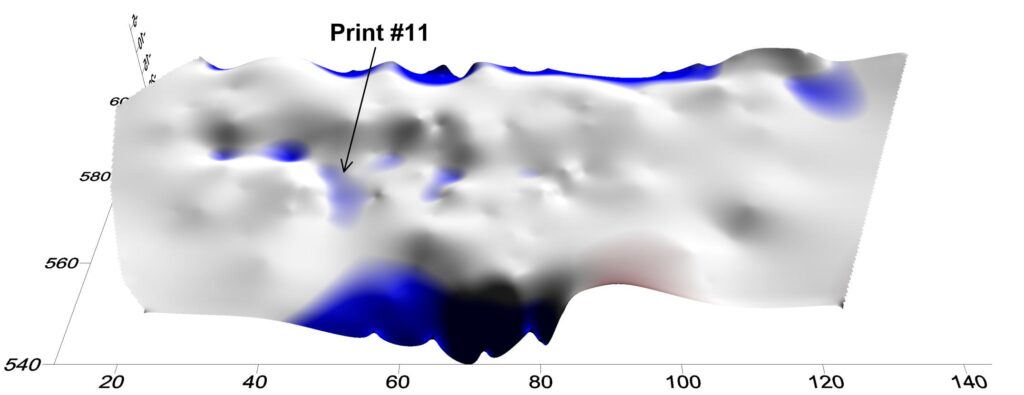
There is much more to present in the near future. This analysis is going to take some more months, as the details in the GPR data are complex and it is necessary to filter out the cracks, roots and many prints of other animals to show only those of hominids. Below is the Site S trackway as I can map it so far, with the Masao et al (2016) excavations at the bottom and the GPR identified prints on the top. This individual was heading fairly straight along one direction (to the northwest, which is down on my map below), but wobbled to the side a bit, much like I walk:

I also have plans to try various filtering methods to make the prints more clear, especially when they are buried more deeply.

















